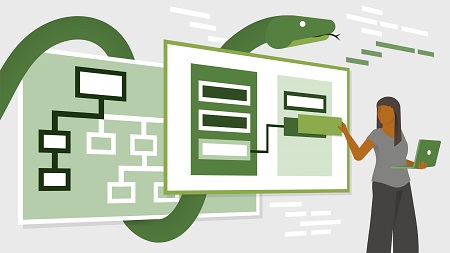
English | MP4 | AVC 1280×720 | AAC 44KHz 2ch | 1h 36m | 274 MB
The object-oriented programming (OOP) features in Python make it easier to build programs of increasing complexity and modularity. In this course, you can learn how to apply core OOP principles like inheritance and composition along with some Python-specific features like “magic” methods and data classes to build programs that are extensible and efficient. Begin by brushing up on some object-oriented basics, and then use Python features like magic methods to make your classes integrate tightly with the Python language and data classes to dramatically reduce the amount of boilerplate code needed to build data-centric objects.
Topics include:
- Defining classes
- Checking instance types
- Using multiple inheritance
- Creating objects with composition
- Leveraging magic methods
- Calling objects like functions
- Defining data classes
- Creating immutable data classes
Table of Contents
1 Python object-oriented programming
2 What you should know
3 Setting up the development environment
4 Object-oriented programming refresher
5 Basic class definition
6 Instance methods and attributes
7 Checking instance types
8 Class methods and members
9 Understanding inheritance
10 Abstract base classes
11 Using multiple inheritance
12 Interfaces
13 Understanding composition
14 What are magic methods
15 String representation
16 Equality and comparison
17 Attribute access
18 Callable objects
19 Defining a data class
20 Using post initialization
21 Using default values
22 Immutable data classes
23 Next steps
Resolve the captcha to access the links!